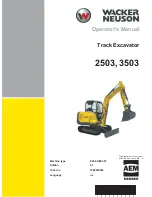
Foreword and general information
Handling of hydraulic components
PC800, 850-8E0
Handling of hydraulic components
00-21
(Rev. 2010/03)
With the increase in pressure and precision of hydraulic equipment, the most common cause of failure is dirt
(foreign material) in the hydraulic circuit. Therefore, special precaution is required when adding hydraulic oil,
or when disassembling or assembling hydraulic components.
1.
Be careful of the operating environment
Avoid adding hydraulic oil, replacing filters, or
repairing the machine in rain or high winds, or at
places where there is a lot of dust.
2.
Disassembly and maintenance work in the
field
If disassembly or maintenance work is
performed on hydraulic components in the field,
there is danger of dust entering the components.
It is also difficult to check the performance after
repairs, so it is desirable to use unit exchange.
Disassembly and maintenance of hydraulic
components should be performed in a specially
prepared dustproof workshop, and the perfor-
mance should be checked with special test
equipment.
3.
Sealing openings
After any piping or equipment is removed, the
openings should be sealed with caps, tapes, or
vinyl bags to prevent any dirt or dust from
entering. If the opening is left open or is blocked
with a rag, there is danger of dirt entering or of
the surrounding area being made dirty by
leaking oil so never do this. Do not simply drain
oil out onto the ground, but collect it and ask the
customer to dispose of it, or take it back with you
for disposal.
4.
Preventing intrusion of foreign materials
during refilling operations.
Be careful not to let any dirt or dust get in when
refilling with hydraulic oil. Always keep the oil
filler and the area around it clean, and also use
clean pumps and oil containers. If an oil cleaning
device is used, it is possible to filter out the dirt
that has been collected during storage, so this is
an even more effective method.
00-21
















































